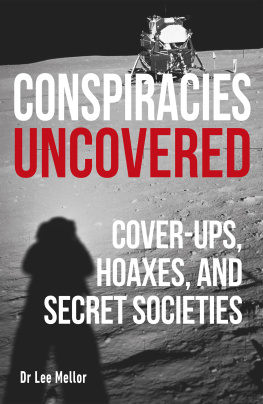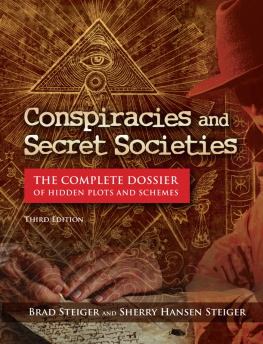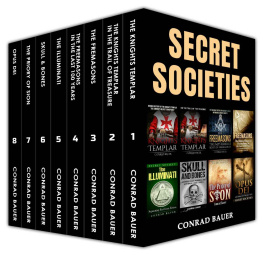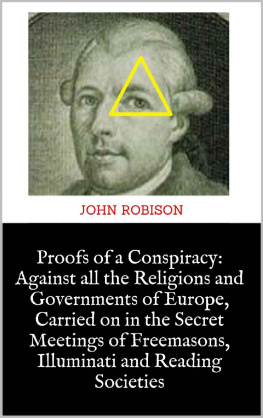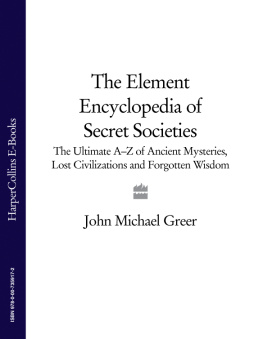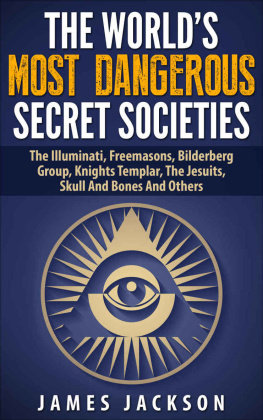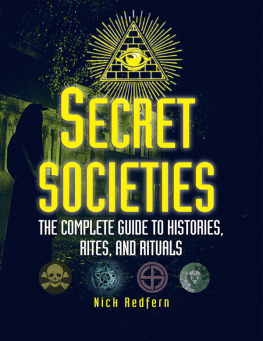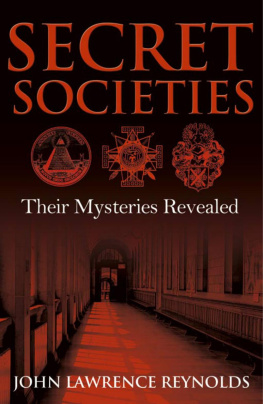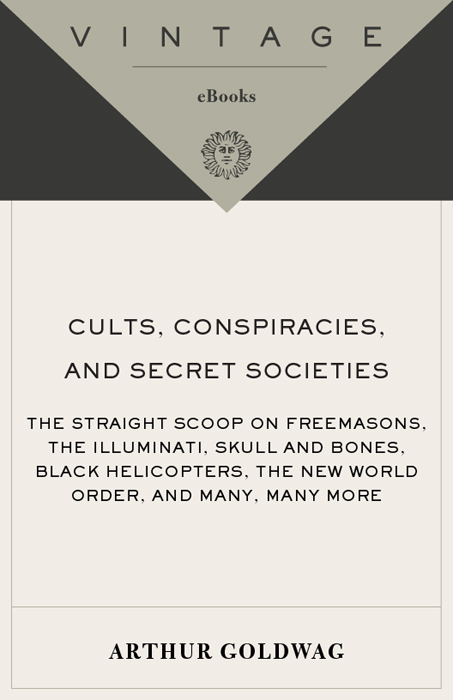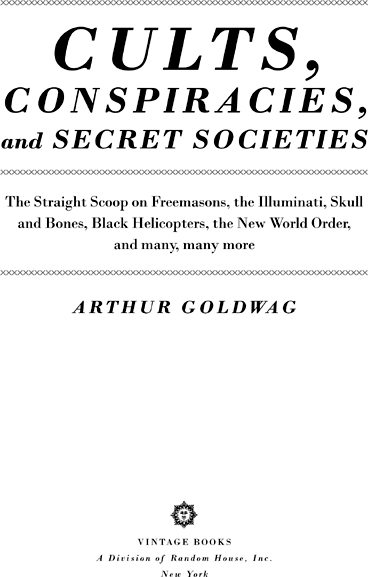ARTHUR GOLDWAG

Cults, Conspiracies, and Secret Societies
Arthur Goldwag is a freelance writer and editor who lives in Brooklyn, New York. He is the author of The Beliefnet Guide to Kabbalah and Isms and Ologies.
ALSO BY ARTHUR GOLDWAG
The Beliefnet Guide to Kabbalah
Isms and Ologies
THIS BOOK IS FOR GRACE
Now I have come to believe that the whole world is an enigma, a harmless enigma that is made terrible by our own mad attempt to interpret it as though it had an underlying truth.
Umberto Eco, Foucaults Pendulum
Contents

List of Topics

Introduction

Although I didnt know it at the time, the seeds for this book were planted on the morning of September 11, 2001. I had just dropped my older son off at school and was riding my bike to my office in midtown Manhattan. When I was about halfway across the Brooklyn Bridge, an odd-looking airplane popped into my field of view. There were red and blue stripes running down its flank and the letters AA were painted on its tail, but everything else about it was incongruous. Its scale was wrong, for one thingit took up more space in the sky than it should have. For another, it was going too fast and in the wrong direction. When a passenger jet flies low over Manhattan, its usually heading north, toward LaGuardia Airport in Queens. This one was hurtling downtown, toward the World Trade Center.
A week before, from the same vantage, two military planes had caught my eye. For a second Id had the crazy thought that one of them might crash into one of the Twin Towers, but of course they hadnt even come closeit was just a trick of foreshortening, a fluke of angles and perspective. This time, there was a resounding BOOM! as the top of the North Tower was engulfed in a fireball. It looked exactly like what Hollywood had taught me it should when an airplane smashes into a 110-story building, except that the plane had simply vanishedI would have expected to see its tail poking out of the buildings skin after the flames dispersed, like a ghastly shiver of bone from a compound fracture, or its twisted fuselage tumbling slowly toward the street. It had left a visible wound in the tower, though, through which I could see an ominous glow. Thousands of tiny lights twinkled prettily in the surrounding air. It was sunlight reflecting off sheets of paper, I would realize latera blizzard of charred and shredded memos, letters, financial statements, and other detritus of office life would drift onto the streets and rooftops of Brooklyn for the rest of the day.
Did you see that? Did you see that? someone bleated hysterically. I must have been in a state of shock, because I hardly even slowed down. I pedaled on stupidlypast City Hall, the Municipal Building, and the Tweed Courthouse, snaking through crowds of ashen-faced office workers stopping in their tracks as they emerged from the subways to gape skyward at the stricken building belching inky black smokeuntil all of a sudden the nickel dropped and I heard rather than thought the words: This was no accident.
It was terrorism, I said to myself. It was war. I had just witnessed the deaths of hundreds, maybe thousands, of people. I turned my bike around and wheeled back toward Brooklyn and my family. I had gone maybe two-thirds of the way across the bridge when I heard the shriek of jet engines and then another explosion. I didnt even turn around to look. This is what it feels like to be inside of history, I heard myself thinking. I was a passerby on the streets of Sarajevo when the Archduke Ferdinand and his wife, Sophie, were shot; I was a sailor swabbing the deck of the Arizona on a December morning in 1941 as the first wave of Japanese dive-bombers flew into sight. My life was no longer my own; I was a character in a story that someone else was writing.
When something momentous happens, everything leading up to and away from the event seems momentous too. Even the most trivial detail seems to glow with significance. People who suffer from paranoid schizophrenia or who are under the influence of hallucinogens see the world that way; it is the hypervigilant perspective that a detective brings to a crime scene and that a mystic assiduously cultivates. It is also the point of view that cults inculcate in their followers and that conspiracy theorists bring to bear on the vicissitudes of everyday life.
Knowing what we know now (and knowing how many things there are that we still dont know), film footage of Dealey Plaza from November 22, 1963, seems pregnant with enigmas and ironiesfrom the oddly expectant expressions on the faces of the onlookers on the grassy knoll in the instants before the shots were fired (What were they thinking?), to the play of shadows in the background (Could that flash up there on the overpass have been a gun barrel gleaming in the sun?). Each odd excrescence, every random lump in the visual texture seems suspicious. Why is that man carrying an umbrella on a sunny day? Who is that woman in the babushka? That lady in the bright red dress?
Mystics believe that multiplicity and change are illusory; that everything is ultimately interconnected, part and parcel of a Transcendental Unity, that our universe is a cosmic One in which all contradictions are resolved. There are no coincidences, no accidentseverything is an integral part of the whole, if only you know how to discern the pattern. The Jewish mystics known as Kabbalists believe that Creation is formed out of Hebrew letters, which serve double duty as numbers. Their method of numerical analysis is called gematria (the Hebrew word comes from the Greek gemetria, or geometry). When Kabbalists practice their deep art of decryption, they believe they are reading the mind of God himself.
Michael Drosnins bestselling book The Bible Code (1997), which used computer algorithms to extract gematrical cryptograms from the Old Testament, was swiftly updated and rereleased in 2002. In the introduction to the second edition, Drosnin recounts how he climbed to the roof of his Manhattan apartment building on September 11, 2001, to watch the World Trade Center towers fall. When he came downstairs, he ran his Bible software and discovered this astonishing acrostic: Twin Towers was encoded in the 3,000-year-old text. Airplane appeared in exactly the same place. It caused to fall, knock down crossed Airplane and Towers. Drosnin did not explain why this urgent and seemingly unambiguous warning hadnt made it into the books first edition, but an event like 9/11 could make a temporary Kabbalist out of anyone.
Caught up in the press and stress of a catastrophe, we grope for a significance thats proportionate to the gravity of the events, seizing on whatever clues we can discern for ourselves, listening uncritically as self-appointed seers and wise men translate the figurative entrails of slaughtered animals into messages and scan the heavens for signs and portents. Even years later, long after the dust has settled, the impulse perseveres. An extremely silly but much-talked-about example: Did you know that if you fold a $20 bill (9 + 11 = 20get it?) in a certain way, you can create uncannily convincing images of the World Trade Center towers and the Pentagon on fire? Fold it slightly differently (actually, you have to sort of crumple itits not all that easy to do) and out of the


